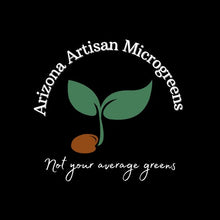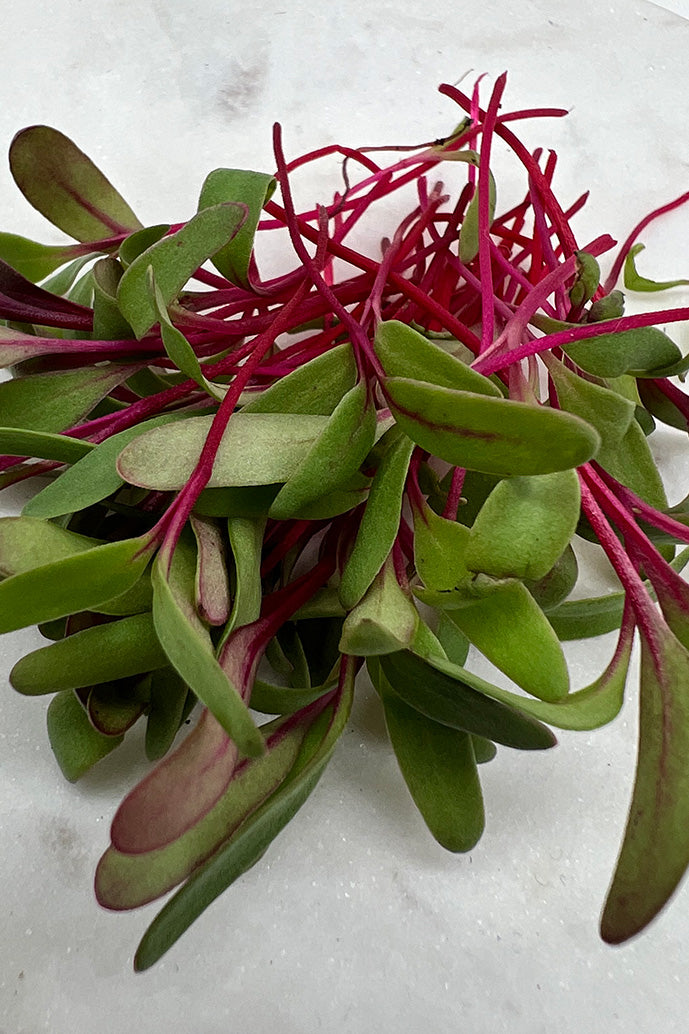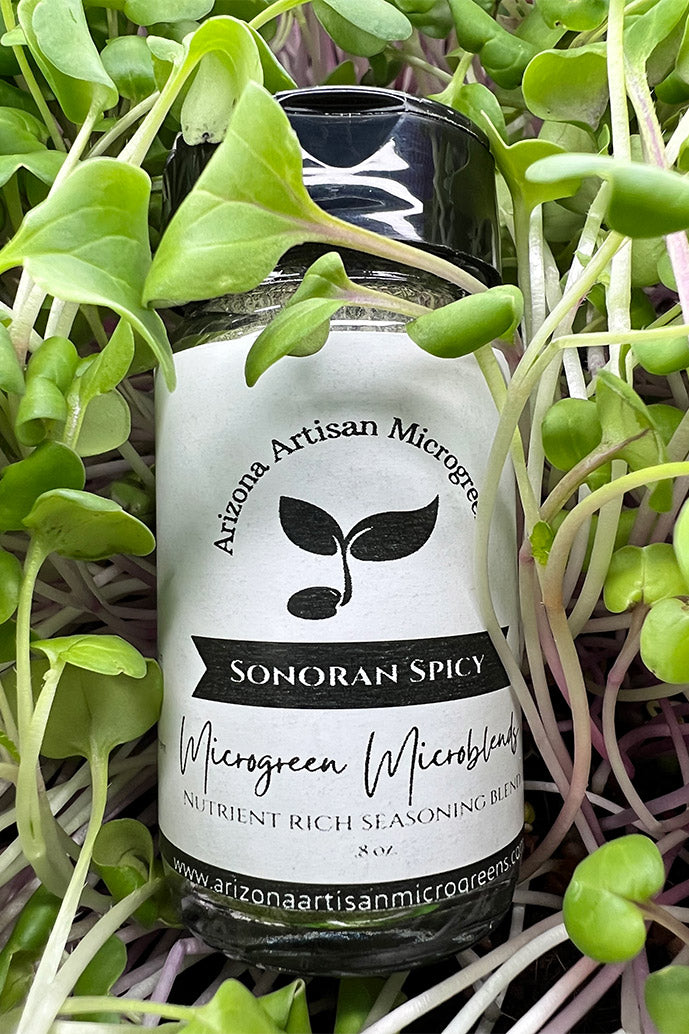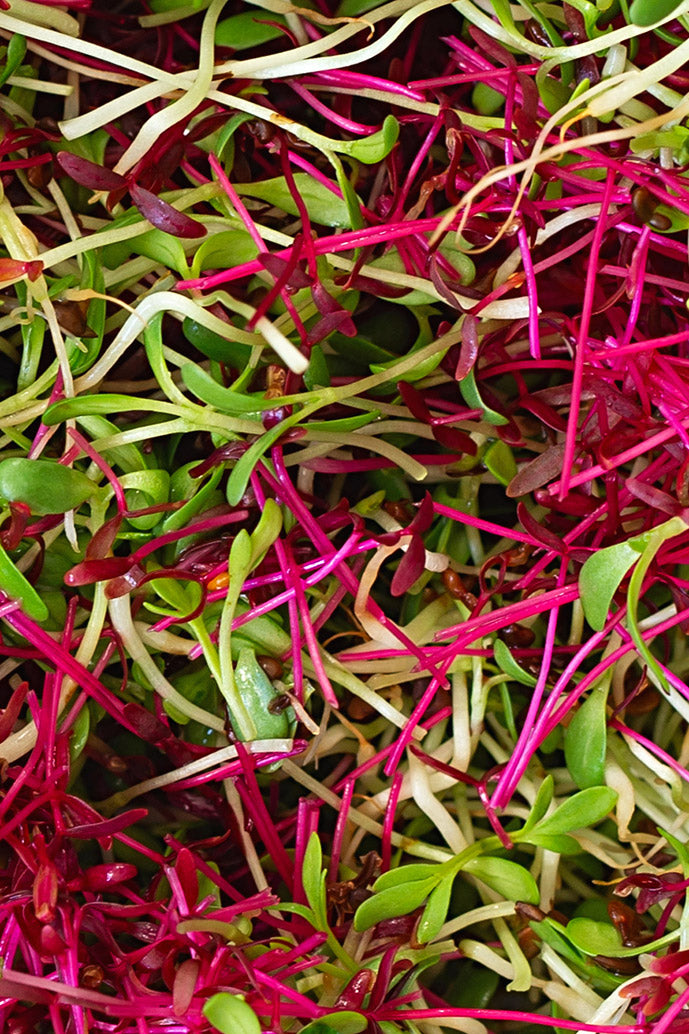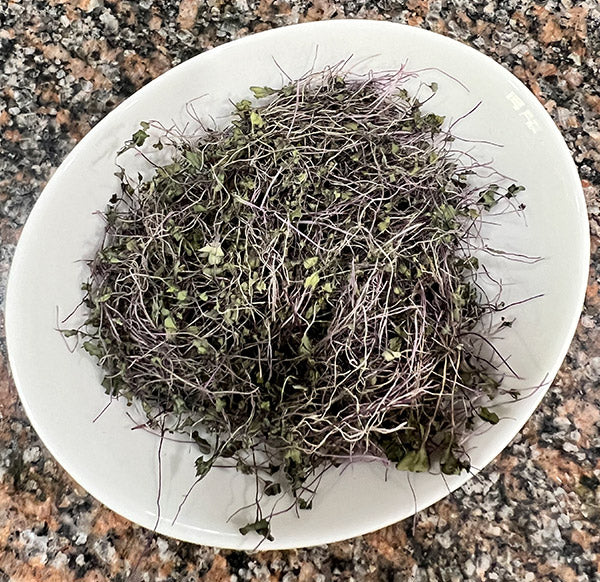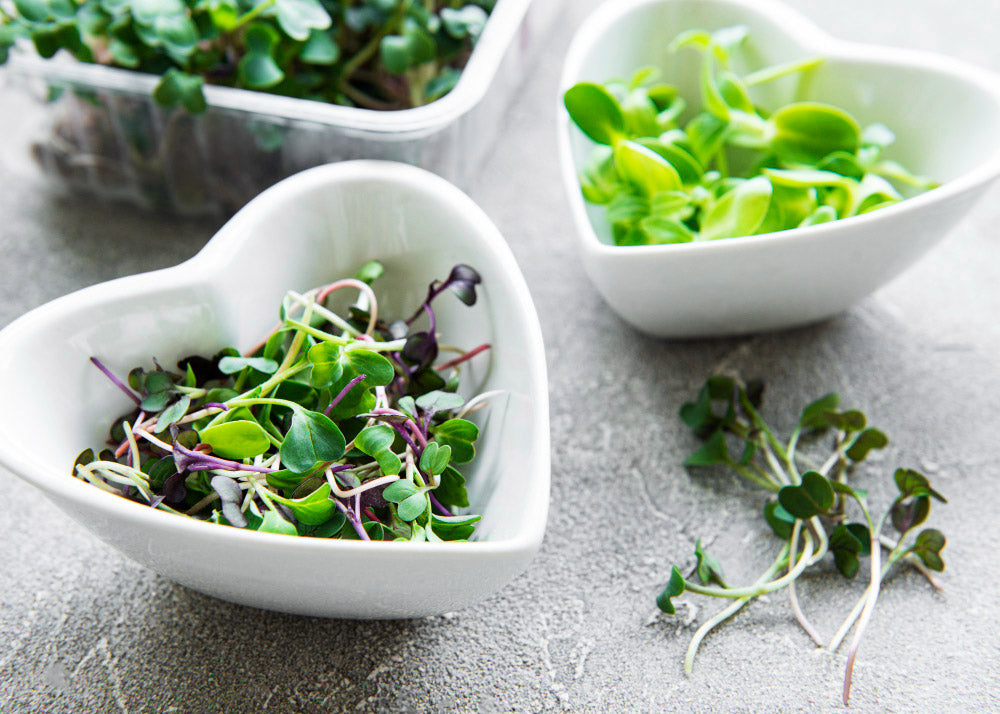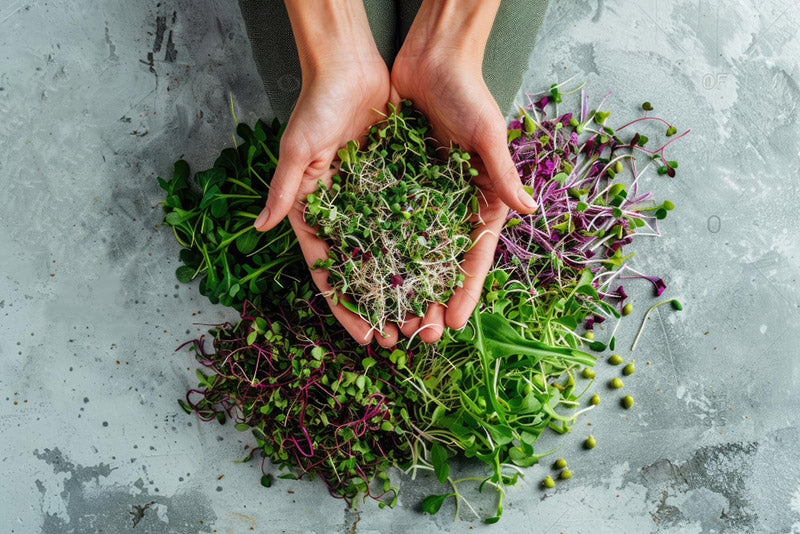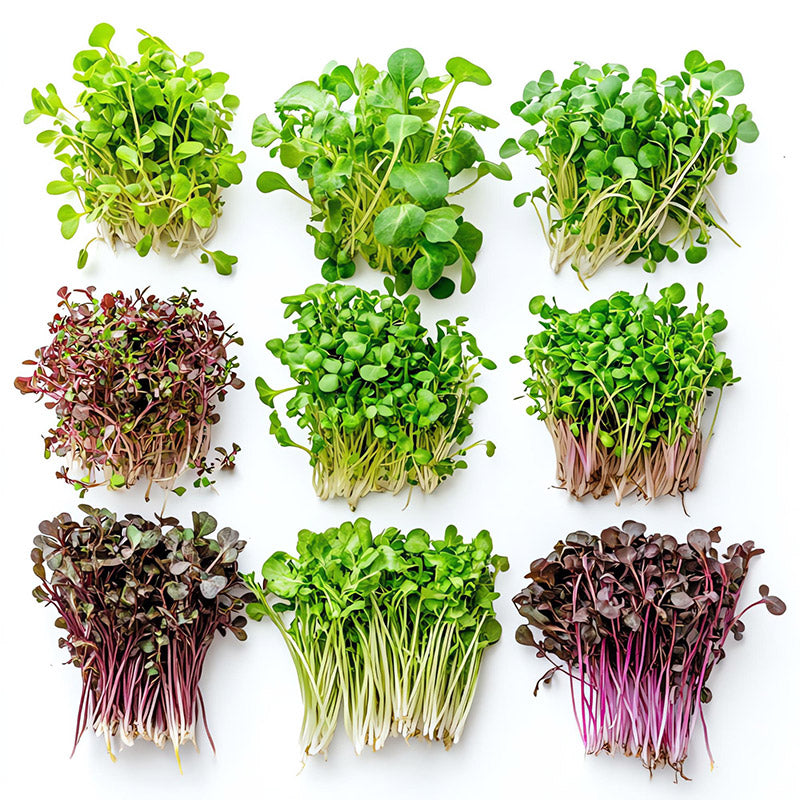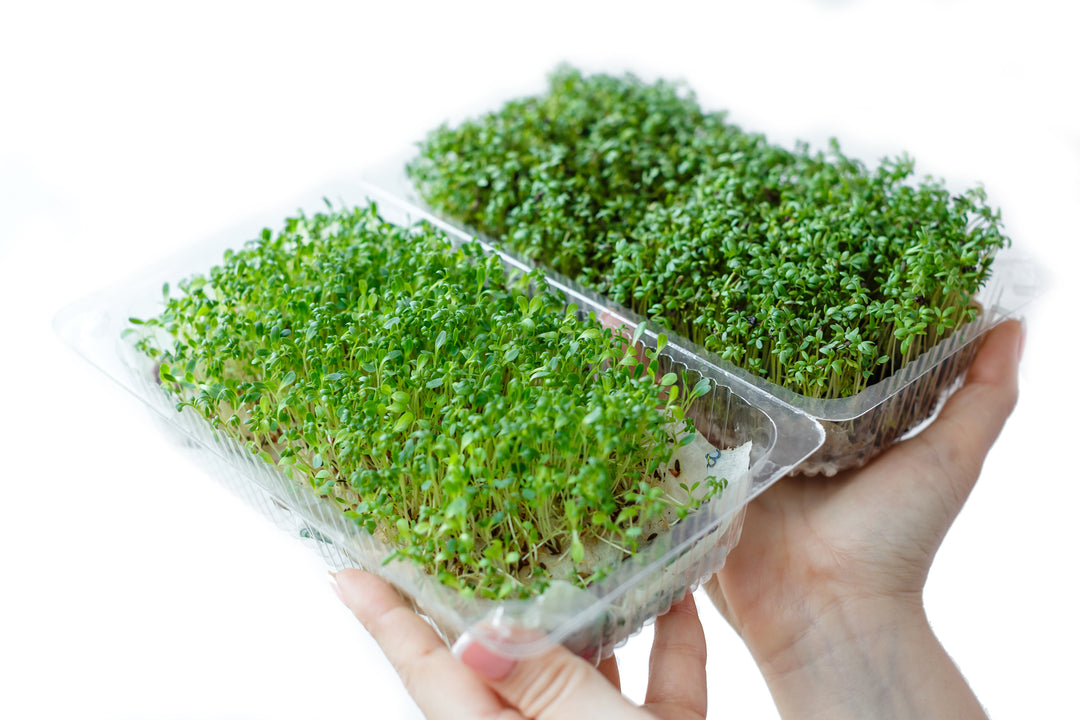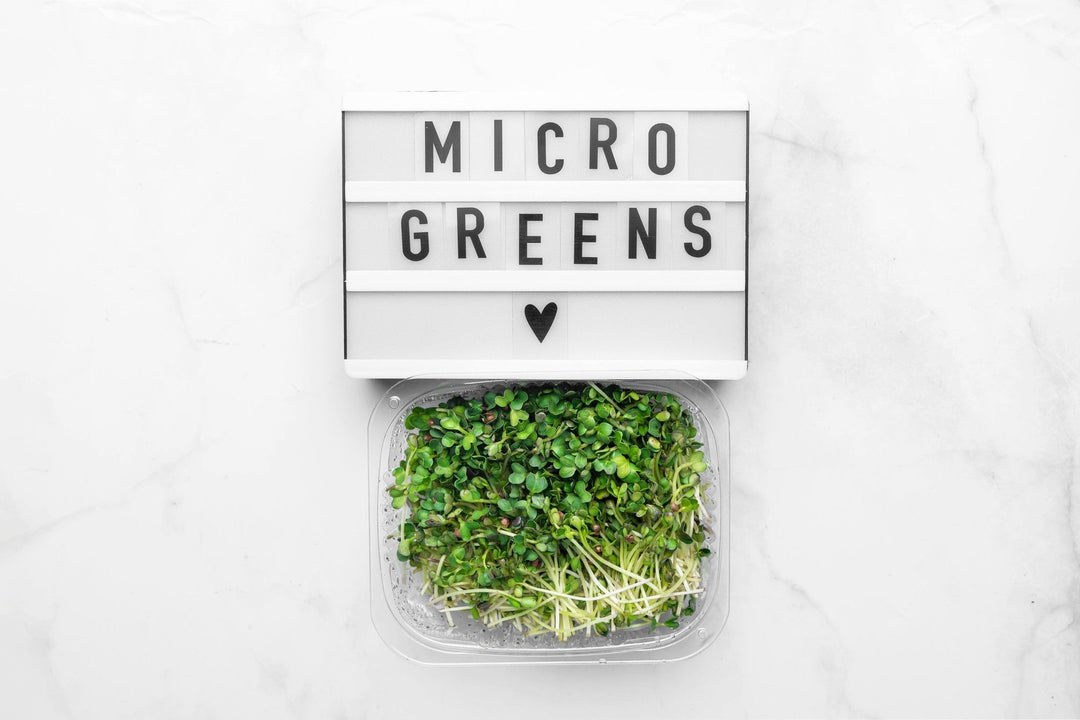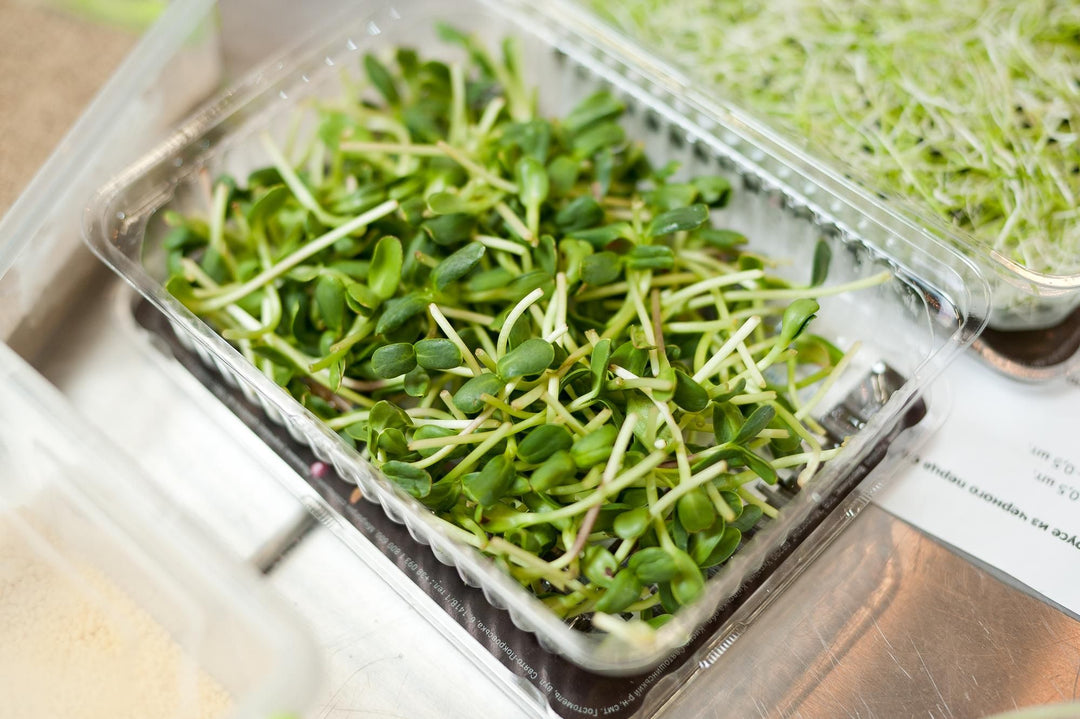How Arizona Artisan Grows Microgreens
OUR GROWING PROCESS

We grow our microgreens year-round at Arizona Artisan Microgreens in the sunny, beautiful state of Arizona. We are located in Tempe, which provides us with the perfect weather to grow nutrient-dense and mineral-rich micro's. This means we can offer our customers a constant supply of fresh, healthy, locally grown micronutrient powerhouses in a tiny plant form!

Our process starts with sourcing only the best non-GMO seeds. Did you know that microgreens, or micros as we lovingly refer to them, are grown from the same seeds as their mature counterparts? So, we use only the finest non-genetically modified and non-hybrid seeds. Microgreens are vegetables and herbs harvested before they develop true leaves. This means we harvest our microgreens at an early growth stage, 7 to 20 days after germinating.

We grow all of our microgreens in 100% natural organic coconut coir. What is coconut coir? Before I started growing microgreens, I knew it was from a coconut, but that was the extent of my knowledge. Coconut coir is the husk from the coconut and is fantastic for moisture retention and promotes soil aeration and drainage. Every block of coconut fiber we grow in has been pre-rinsed and pre-screened, ensuring our coconut coir is clean, pure, and has no impurities. Our coir's high cation exchange capacity (CEC) and neutral pH significantly improve nutrient uptake. We use and offer our local community our spent organic material and coconut coir, ensuring that our process of growing microgreens is environmentally friendly and sustainable.

We use PH-balanced water, which has been run through five filters to ensure its purity. This helps plants absorb nutrients effectively, promote healthy growth, and prevent nutrient deficiencies.

Since we do not use harmful chemicals, including pesticides or herbicides, in our growing process, I am often asked how we disinfect and ensure that the microgreens are free from pathogens. We use H2O2, also known as Hydrogen Peroxide. Hydrogen Peroxide is the perfect natural disinfectant as it has antibacterial and antifungal properties. In addition to being a natural disinfectant, it helps aerate the coconut coir we use as soil to grow our microgreens. Hydrogen Peroxide helps the roots absorb nutrients and keeps them strong and healthy. H2O2 is an environment-friendly compound because it is composed of oxygen and hydrogen. It is biodegradable as it breaks down to water and oxygen.

Humidity, temperature, and light exposure are all factors we consider in our indoor vertical farm. Combining the latest technology and hydroponics allows us to achieve the optimal environment for growing outstanding microgreens. We use full-spectrum LED grow lights above 5000K designed for optimal growth.

We believe so much in the power of microgreens to improve our and our customers' quality of life that we grow an extensive amount of micros. As with every type of vegetable or plant, it has taken us years to learn how to grow each micro to ensure its macro, nutrient, and mineral density. Like their mature vegetable counterpart, each microgreen offers a rich nutrient profile and phytonutrients. A huge variety of health benefits come with eating microgreens, also known as vegetable confetti and vegetable greens. These are not to be confused with shoots or sprouts, which are harvested in a much more mature state with the roots attached.
I am often asked which microgreen I recommend. The answer is all of them. A variety of microgreens in your diet is just as important as the quantity. Unfortunately, you can not eat just one to get all the nutrients your body needs to be healthy. That is why our premium mixes include a variety of microgreens. In fact, it is so important that our 100% microgreen seasonings and 100% microgreen powders are made with a minimum of at least 4 varieties. The health benefits include: reducing heart disease, risk of stroke, lowering blood pressure, helping to prevent some types of cancer, reduced rick of multiple chronic diseases, and an improved immune system among others. So, what varieties of microgreens are available? Right now, you can purchase the following varieties of fresh microgreens: beet, brocolli, cantaloupe, chia, kale, pea, popcorn, radish, red cabbage, red clover, sunflower, and swiss chard. We are always adding new varieties to our fresh micro lineup so check back often. The fresh varieties are only available to those in Arizona. However, we do have the following available that can he shipped anywhere within the United States. dehydrated whole plant microgreens, microgreen microblends seasonings, and microgreens powder.
Eat with a purpose, eat a variety daily......
REFRENCES
1. Hung HC, Joshipura KJ, Jiang R, Hu FB, Hunter D, Smith-Warner SA, Colditz GA, Rosner B, Spiegelman D, Willett WC. Fruit and vegetable intake and risk of major chronic disease. Journal of the National Cancer Institute. 2004 Nov 3;96(21):1577-84
2. He FJ, Nowson CA, Lucas M, MacGregor GA. Increased consumption of fruit and vegetables is related to a reduced risk of coronary heart disease: meta-analysis of cohort studies. Journal of human hypertension. 2007 Sep;21(9):717.
3. Bertoia ML, Mukamal KJ, Cahill LE, Hou T, Ludwig DS, Mozaffarian D, Willett WC, Hu FB, Rimm EB. Changes in intake of fruits and vegetables and weight change in United States men and women followed for up to 24 years: analysis from three prospective cohort studies. PLoS medicine. 2015 Sep 22;12(9):e1001878.
4. Wang X, Ouyang Y, Liu J, Zhu M, Zhao G, Bao W, Hu FB. Fruit and vegetable consumption and mortality from all causes, cardiovascular disease, and cancer: systematic review and dose-response meta-analysis of prospective cohort studies. BMJ. 2014 Jul 29;349:g4490.

